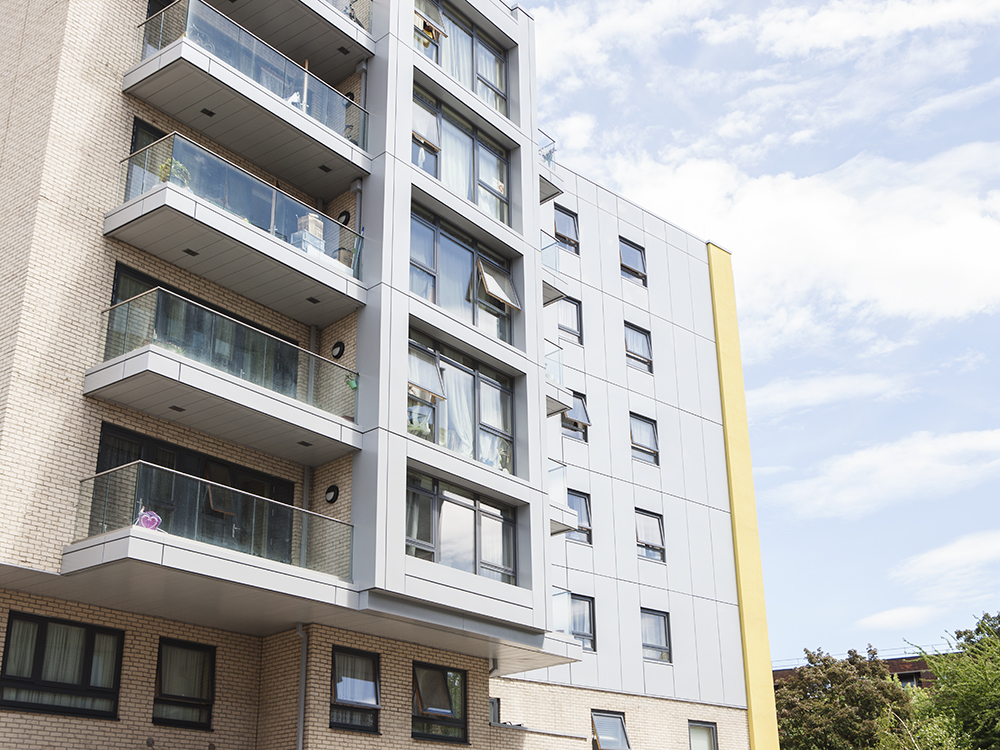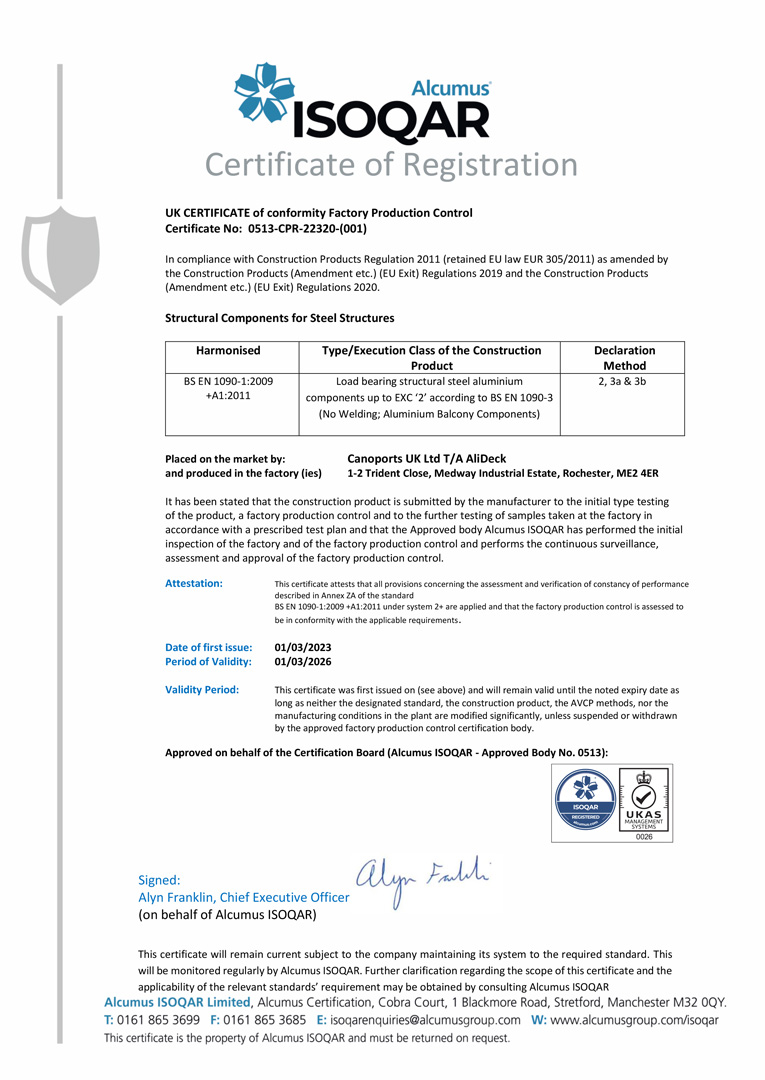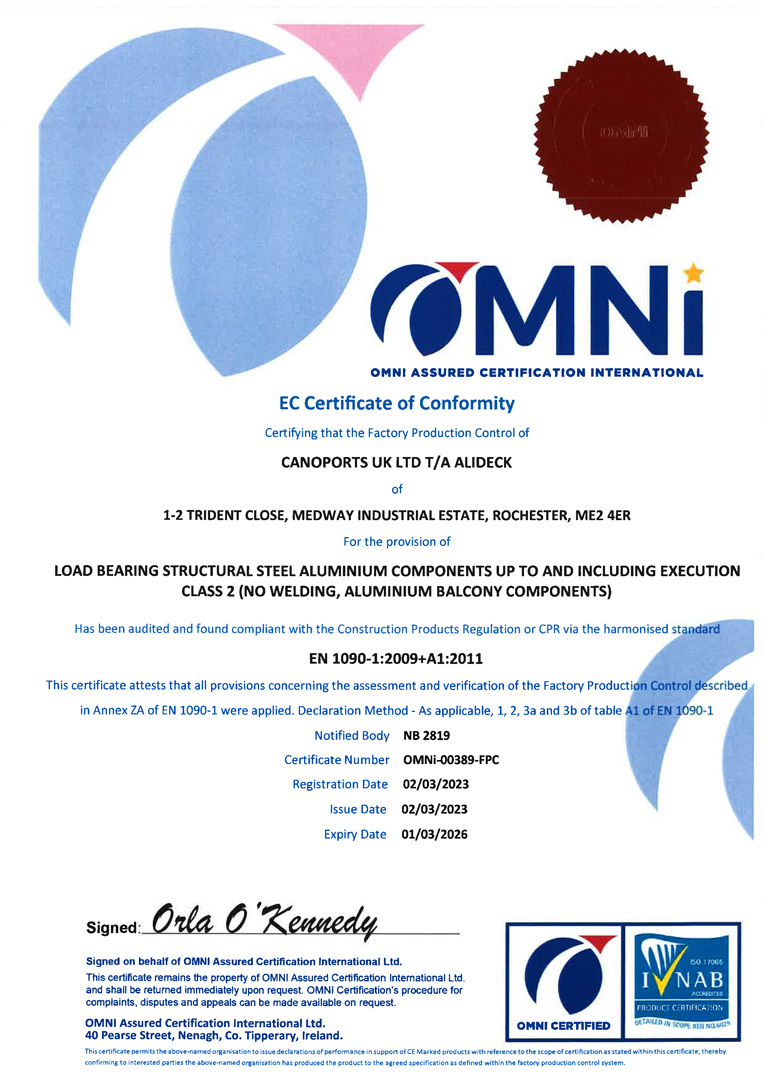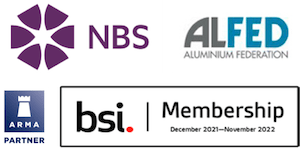New EWS1 Criteria Announced by RICS following Consultation, Combustible Balconies Highlighted As Concern
For over a year, the leasehold housing market has been ensnared in the EWS1/External Wall Fire Review debacle. Launched in December 2019, the EWS1 scheme was an effort by the Royal Institution of Chartered Surveyors (RICS), the Building Societies Association (BSA), and UK Finance to resolve the issue of mortgage providers being unwilling to accept the risk of lending for properties in high-rise blocks following Grenfell and the newly-recognised issue of flammable cladding.

Background on EWS1
While EWS1 as launched was a perfectly reasonable and sensible set of guidelines, the entire scheme was derailed within weeks by new Government guidance in the January 2020 MHCLG Consolidated Advice Note. The main issue with the new Advice Note was that guidance pertaining to height of buildings was changed, from the previous 18m and above, to include buildings of all heights into the scope of the Advice Note and, consequently, EWS1.
This sudden and unexpected vast expansion of affected buildings caused EWS1 to effectively fail as a scheme due to the extreme shortage of qualified surveyors. With only fewer than 300 Chartered Fire Engineers in the country “suitably qualified” to complete EWS1 surveys and now many tens of thousands of buildings requiring inspection, quoted lead times for surveys were often several years or more.
Clearly, this Kafkaesque situation was wholly intolerable and many thousands of homeowners experienced extreme challenges throughout 2020 as they found themselves trapped in unsellable properties while also potentially facing large remediation bills and increased insurance costs.
Steps towards resolution
While the issues surrounding EWS1 took a backseat in the early part of 2020 to the Coronavirus pandemic, as summer began more and more attention began to be paid to the problem and it was rapidly recognised as a crisis and brewing scandal. Discussion of EWS1 eventually reached Parliament with it being raised in Prime Minister’s Questions on several occasions and subsequently raised in various debates.
In November 2020, the Ministry of Housing, Communities and Local Government (MHCLG) issued a Supplementary Note to the January 2020 Consolidated Advice Note. The intended effect of this was to allow blocks meeting certain criteria to be removed from consideration for EWS1 surveys. Sadly, while initially reported as a declaration that EWS1 was not required on buildings without flammable cladding, the practical effect of the Supplementary Note was negligible and little, if any, progress was made.
As 2021 began, and after taking many months of heat in the media and online (and associated reputational impact), RICS announced a consultation on new criteria for EWS1. With new definitions on requirements for surveys for buildings of different heights and with different materials used in their construction, the consultation proposed a radical overhaul of the EWS1 scheme.
Results of the RICS January 2021 EWS1 Consultation
On 8th March 2021, RICS published their new guidance on EWS1. Titled “Valuation of properties in multi-storey, multi occupancy residential buildings with cladding – RICS guidance note March 2021”, the guidance provides major changes to EWS1 and the intended scope of the scheme.
RICS state in their announcement that the guidance “creates clarity and consistency about when a valuer is not required to request further investigation of cladding through an EWS1 form before valuing a property in a building of multiple occupation” and Dame Janet Paraskeva, chair of the RICS Standards & Regulation Board, said that the announcement “is a crucial step in unlocking the market, by ensuring that only those buildings where there are risks of costly remediation as a result of safety concerns from cladding are subject to additional checks. The guidance is anticipated to result in a reduction in the number of EWS1 requests which will therefore allow more focus on the assessments of higher risk buildings, which should speed up the overall process whilst ensuring appropriate protection for lenders and purchasers.”
The new criteria for EWS1 requirement follows;
For buildings over six storeys an EWS1 form should be required where:
There is cladding or curtain wall glazing on the building or
there are balconies which stack vertically above each other and either both the balustrades and decking are constructed with combustible materials (e.g. timber) or the decking is constructed with combustible materials and the balconies are directly linked by combustible material.
For buildings of five or six storeys an EWS1 form should be required where:
There is a significant amount of cladding on the building (for the purpose of this guidance, approximately one quarter of the whole elevation estimated from what is visible standing at ground level is a significant amount) or
there are ACM, MCM or HPL panels on the building** or
there are balconies which stack vertically above each other and either both the balustrades and decking are constructed with combustible materials (e.g. timber), or the decking is constructed with combustible materials and the balconies are directly linked by combustible materials.
For buildings of four storeys or fewer an EWS1 form should be required where:
There are ACM, MCM or HPL panels on the building.
Does this new guidance solve the problem?
The Million Dollar Question here is, indeed, will this new guidance solve the issues at hand and will it unblock the housing market and allow currently trapped homeowners to sell their homes and move on?
Time will tell, of course, but the new criteria certainly contains specific guidance on circumstances where EWS1 should be required, hopefully providing clarity for situations where it should not be required. A key new definition in the criteria is how heights are addressed; rather than speaking in terms of metres, heights are now defined by storeys, clearly intended to simplify appraisal of buildings.
There are, however, some concerns remaining.
The EWS1 criteria is valuation guidance only and is not legislation, so does not carry regulatory weight. Ultimately, lenders will make their own decisions on how they approach the risk profile of low and high-rise buildings and, if they feel that the risk remains unacceptable, there is the danger of the 2019 and earlier, pre-EWS1, reluctance to lend returning.
Further questions must surely be; how will buildings be assessed as requiring EWS1 or not, and who will perform those assessments? Will it be the case that a survey will be required to determine if an EWS1 survey will be required? If so, will it involve invasive testing? Who will be qualified to perform that? What liability will that person or organisation have if their assessment is subsequently proved wrong?
A major issue throughout 2020 was that many of the chartered fire engineers who were deemed as “suitably qualified” to conduct EWS1 surveys could not access adequate professional indemnity insurance for their work at an affordable cost. This particular problem seems to be unaffected by this new guidance on survey criteria, and how insurers will react to other individuals deeming blocks as not requiring EWS1 remains to be seen.
Combustible balconies and EWS1
Balconies, as specified attachments to the external envelope of buildings, are highlighted in the new EWS1 guidance as causing concern for fire safety issues. This is in-line with the previous form of EWS1, where combustible materials on balconies indicated that further remedial works may be required.
In the new criteria, for buildings of five storeys or higher, stacked balconies with combustible decking and balustrades or balconies with combustible decking that are linked by combustible materials are identified as situations where EWS1 should be required.
This implies that when balconies are not stacked and are not linked by combustible materials, and for buildings four storeys and lower, that EWS1 is not required (unless there are other issues that do require EWS1, such as flammable cladding, etc.).
It is worth considering in these instances, however, that the Government advice issued in January 2020 specifies that combustible materials in balconies at any height should be removed and replaced “as soon as practical”, and it would be a fair assumption to make to expect lenders to look closely at this when deciding on a building’s risk profile. Also, with new legislation moving through Parliament in the Fire Safety Bill and Building Safety Bill, the ultimate regulatory position is yet to be determined and might well again negate the guidance provided by RICS, injecting an inherent uncertainty in any EWS1 decisions by lenders.
Conclusions and thoughts
The new EWS1 criteria guidance from RICS is absolutely to be welcomed and its clarity on key matters is helpful and informative. What is even clearer is that the situation with homeowners being unable to sell their properties cannot be allowed to continue. However, as with the Government attempt to resolve the issue in November 2020, there appear to be several unanswered questions.
As reaction to the new guidance comes in over the coming days and weeks, a clearer picture should begin to form. What is certain, though, is that even with these changes in criteria, EWS1 will continue to be an issue for many homeowners and many blocks will continue to be impacted. The only certain solution is to remove and replace all combustible materials in the external envelope of affected buildings, far from a simple task but logically the only effective remedy.








